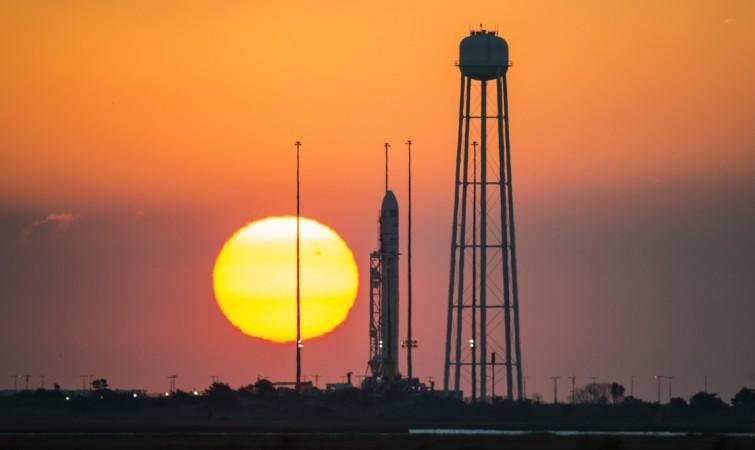
NASA will launch a rocket bound for the International Space Station on Tuesday evening and it will be visible to millions in the East Coast, reports indicate.
If weather permits, Orbital Sciences' Antares rocket will launch from NASA's Wallops Flight Facility in Virginia at 6:22 p.m, and the event can be watched through NASA TV, the space agency said in a tweet.
Antares launch now scheduled for 6:22 p.m., Tuesday, Oct. 28. NASA TV coverage begins at 5:30 p.m. EDT.
— NASA Wallops (@NASA_Wallops) October 28, 2014
The rocket will propel a Cygnus cargo spacecraft to the International Space Station. The cargo spacecraft will be loaded with about 5,000 pounds of supplies for experiments, besides containing food and clothes for the astronauts. It is also carrying a a tank filled with pressurized nitrogen for the station's airlock system.
"A Tuesday launch will result in the Cygnus spacecraft arriving at the space station early Sunday, Nov. 2. NASA TV coverage of rendezvous and berthing will begin at 3:30 a.m. with grapple at approximately 4:58 a.m," NASA said in a press statement.
This will be Orbital Sciences' third cargo delivery mission to the space station for NASA under a $1.9 billion contract that calls for a total of eight such delivery missions.
The launch of the cargo spacecraft was initially set for Monday, but NASA had to abort the launch due to the presence of a boat in the hazardous area.
We're aborting today's launch attempt of #Antares due to a boat downrange in the hazard area. Watch: http://t.co/x8cgWHEj6R — NASA Wallops (@NASA_Wallops) October 27, 2014
Sarah Daugherty, NASA's test director at Wallops, said at a press conference on Sunday that people in the East coast -- from Connecticut to South Carolina -- will be able to get a great view of the Antares lighting up the night sky, reported Space.com.
If the launch goes as planned, the spacecraft will spend about a week in its orbit before it catches up to the International Space Station on 2 November where it will remain for about a month, according to Space.com. This will give the station enough time to unpack the cargo and fill it with trash, following which the capsule will depart the lab around 3 December, the outlet noted. The trash will burn up with the craft's re-entry into Earth's atmosphere.








